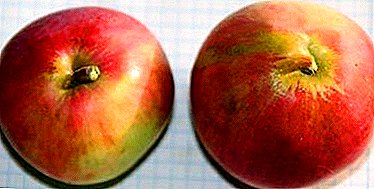
The modern world is rich in allergic diseases. Carrot allergy is a common form of food allergy. Carrots, due to many factors, can bring problems no less than any other vegetable or fruit, so it is important not to forget about precautions.
Its manifestations are varied and may include skin rashes, itching, rashes on the mucous membranes and dyspeptic symptoms in the form of diarrhea. Severe allergic reactions - angioedema and anaphylactic shock - are a great danger.
Is the vegetable allergen?
 Carrots contain proteins and glycoproteins that can cause an allergic reaction. The vegetable itself has a low allergenic potential and causes hypersensitivity reactions in only 2% of the population. However, in practice, the frequency of occurrence of allergy to carrots is much higher. The reason for this is cross-allergy.
Carrots contain proteins and glycoproteins that can cause an allergic reaction. The vegetable itself has a low allergenic potential and causes hypersensitivity reactions in only 2% of the population. However, in practice, the frequency of occurrence of allergy to carrots is much higher. The reason for this is cross-allergy.
It is characterized by the fact that when injected into the body of carrot proteins, immunity cells begin to regard them as other allergens due to structural similarities. This is due to the fact that the proteins in its composition are structurally identical to dandelion proteins, birch pollen and willow pollen. These protein compounds are strong allergens, leading to body sensitization.
Causes of an allergic reaction
- The highest incidence of allergies is observed when eating raw carrots or carrot juice in large quantities.
- Less commonly, allergy occurs in individuals who have consumed heat-treated or canned carrots.
- An infant who is breastfed may have an allergic reaction due to the presence of carrots in the mother’s diet.
Symptoms of the disease
Allergy symptoms usually develop 1-3 hours after eating carrots, less often after 5-8 hours. The clinical picture is characterized by mucocutaneous and dyspeptic manifestations.
 Allergic skin and mucous symptoms include:
Allergic skin and mucous symptoms include:
- blister rash with clear contents or saturated red spots - most often they are located in the chest, hands and face;
- itching and burning in the area of rash;
- ulceration or peeling of the lips (allergic cheilitis);
- redness and swelling of the oral mucosa;
- itching and burning in the mouth.
Dyspeptic symptoms are manifested by the following symptoms:
- flatulence;
- seizures of cramping abdominal pain;
- diarrhea;
- nausea, less vomiting.
Much less common manifestations of allergy to carrots are allergic conjunctivitis or respiratory disorders in the form of a cold, cough, sneezing or shortness of breath.
How is she dangerous?
The danger of hypersensitivity is the development of severe acute allergic reactions that are life-threatening. These include:
- Angioedema - characterized by a massive spread of dense edema on the subcutaneous fatty tissue of the face and neck, less limbs. In 35% of cases, the swelling spreads to the larynx, which causes acute respiratory failure. If the patient is not treated at the time, he will die of suffocation. The first signs that suspect Quincke's edema are suspected - puffiness of the face and neck, cough and hoarse voice.
- Toxic epidermal necrolysis - extreme manifestation of a skin allergic reaction. When this occurs, the formation of large blisters filled with clear liquid mixed with blood. Subsequently, the upper layer of the skin begins to tear away, and large ulcers and erosion form on the surface of the body.
- Anaphylactic shock - The most severe variant of an allergic reaction. It is characterized by deep violations of microcirculation and a sharp decrease in blood pressure. A person develops collapse, and he loses consciousness. Due to circulatory disorders and hypotension, all vital organs are affected, leading to death without medical assistance.
Diagnostics
 The diagnosis of an allergy episode is made on the basis of the history and clinical examination of the patient. However, these methods allow to establish only the fact of the presence of an allergic reaction, but do not make it possible to determine the allergen itself.
The diagnosis of an allergy episode is made on the basis of the history and clinical examination of the patient. However, these methods allow to establish only the fact of the presence of an allergic reaction, but do not make it possible to determine the allergen itself.
In this case, after the course of treatment, the doctor may prescribe a diagnostic product injection, i.e. deliberately eating carrots and evaluating the patient’s condition. As a rule, such provocative tests are conducted under the supervision of a doctor.
A specific and reliable method of diagnosis, allowing to identify the body's hypersensitivity, is an immunological study with the definition of immunoglobulin E to carrot allergens. For analysis it is necessary to donate venous blood.
Step-by-step treatment instructions
Important! For the selection of the correct treatment regimen should consult a doctor. Any medication, even for treating allergies, can exacerbate the manifestations of an allergic reaction and has many side effects.
If you suspect toxic epidermal necrolysis or angioedema, it is impossible to self-medicate. In such cases, you should immediately call the ambulance team, because there is a direct threat to human life.
Emergency
In mild cases, it is enough to take any antihistamine tablet.available in the house (Suprastin, Dimedrol, Tsetrin, Alercaps, Loratex).
If the allergic reaction is severe, then antihistamines are administered intramuscularly or intravenously:
- Suprastin 2% - 1 ampoule.
- Diphenol 1% - 1 ampoule.
Intramuscular or intravenous administration of antihistamines is used only in exceptional cases and after consulting a doctor.
In the case when the patient has angioedema or epidermal necrolysis, glucocorticosteroids (Prednisolone, Methylprednisolone) are additionally introduced into the vein.
Ordinary
A group of antihistamines is used to treat the manifestations of an allergic reaction. They reduce the effect of histamine (an allergy mediator) on the body by blocking specific receptors. Supplements to pharmacotherapy are traditional medicine., reducing the appearance of pruritus and rash.
Drugstores
 It is recommended to use antihistamines of the 2nd or 3rd generation. These include:
It is recommended to use antihistamines of the 2nd or 3rd generation. These include:
- Loratadine (Lorand, Claritin) - 10 mg (1 tab.) 1 time per day.
- Desloratadine (Alergostop, Loratek, Elius) - 5 mg (1tab.) 1 time per day.
- Cetirizine (Paralazin, Tsetrin) - 5 mg (1tab.) 2 times a day.
Drugs must be drunk throughout the entire period, while manifestations of allergy are expressed and 2-3 days after the symptoms subside. The average duration of treatment is usually 5-7 days.
If the allergy has manifested itself only to skin rashes with a mild itch, then it should be limited only to ointments containing glucocorticosteroids:
- prednisolone or hydrocortisone ointment;
- Elok;
- Flucinar;
- Triacort.
The ointment is applied only on the affected skin with a thin layer 1-2 times a day. The course of treatment is not more than 5-7 days. Prolonged use of glucocorticosteroid ointments leads to the formation of pigment spots, trophic ulcers and areas of hyperkeratosis.
ethnoscience
Allergic skin rashes can be smeared with olive oil. It has antioxidant properties and helps reduce itching and inflammation. Similar effects are common to some medicinal plants:
- aloe juice;
- decoction of chamomile or centaury;
- rosehip oil;
- decoction of oak bark.
The affected skin should be lubricated 2-3 times a day. In case of severe swelling, you can use compresses of raw potatoes, ground to a pasty state. After the disappearance of the rash phytotherapy course is stopped.
Diet
Adults and children prone to allergies to carrots, it is recommended to adhere to the elimination and hypoallergenic diet. Elimination involves the complete exclusion from the diet of carrots and dishes prepared with its content.
 Hypoallergenic diet - health food, aimed at reducing body sensitization. It implies the rejection of food with a high allergenic potential. These products include:
Hypoallergenic diet - health food, aimed at reducing body sensitization. It implies the rejection of food with a high allergenic potential. These products include:
- chocolate;
- citrus;
- eggs;
- red apple varieties;
- cow's milk;
- carbonated drinks;
- sweets and pastries.
It is recommended to give preference to cereals and vegetables, lean meat and dairy products. On the day, you need to drink at least 1.5 liters of clean drinking water in order to reduce the effects of internal intoxication of the body.
Hypoallergenic diet should be followed during the manifestations of allergies, as well as for 10-14 days after subsiding signs of an allergic reaction. An elimination diet should be observed all the time to avoid repeated episodes of food allergies.
Prevention
Preventive measures consist in the complete exclusion from the diet of carrots and dishes prepared from it.
Much attention is recommended to be paid to strengthening the immune system, because any form of allergy is a manifestation of an inadequate response of the immune system to a foreign substance. For this purpose, immunomodulators are shown, hardening and good nutrition.
Despite the low allergenic potential, carrots often cause food allergic reactions. This is due to the phenomenon of cross-allergy and the similarity of its proteins with strong natural allergens. The clinical picture of an allergy is individual and can be manifested by skin rashes, itching or dyspeptic symptoms.
In severe cases, angioedema, Lyell’s syndrome and anaphylactic shock may develop. Treatment involves taking antihistamines, eliminating carrots from the diet and following a hypoallergenic diet.












